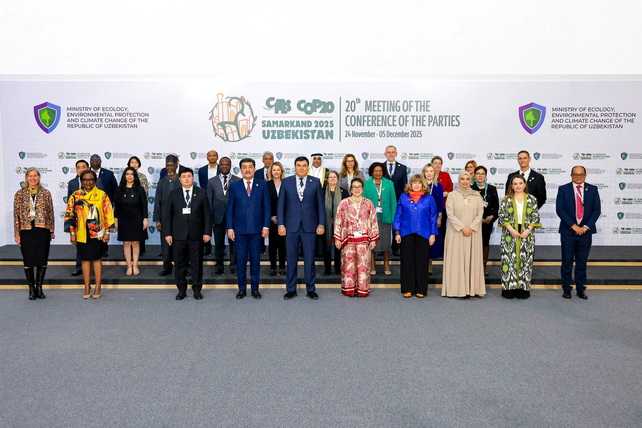
CITES CoP20: Central Asian Countries Discuss Innovative Measures to Protect Rare Flora and Fauna
CITES CoP20: Central Asian Countries Discuss Innovative Measures to Protect Rare Flora and Fauna
Tashkent, Uzbekistan (UzDaily.com) — A high-level dialogue was held in Samarkand focusing on enhancing the strategic impact of CITES CoP20 and addressing monitoring, funding, and practical measures in the regulated trade of wildlife, Uzbek officials reported.
The event was opened by Aziz Abdukhaqimov, Presidential Advisor and Chairman of the National Committee for Ecology and Climate Change. Opening remarks were also delivered by CITES Secretary-General Ivonne Higuero and UNDP Resident Representative in Uzbekistan Akiko Fuji.
Central Asian Ministers Discuss Biodiversity
During a panel session, ministers from Central Asian countries discussed “Innovative Solutions for Biodiversity Conservation in the Region.” Participants included Kazakhstan’s Minister of Ecology and Natural Resources Erlan Nysanbaev; Kyrgyzstan’s Deputy Minister of Natural Resources, Ecology and Technical Supervision Almaz Musaev; IUCN Director-General Gretel Aguilar; and TRAFFIC International Director-General Richard Scobey.
Speaking at the plenary session, Abdukhaqimov emphasized that illegal wildlife trade remains one of the largest forms of transnational crime. “According to a 2024 report, illegal wildlife trade was detected in 162 countries and affected around 4,000 species of plants and animals, of which 3,250 are listed under CITES. Governments have seized more than 13 million units of products,” he said.
Uzbekistan Proposals
To strengthen the fight against illegal wildlife trade, Abdukhaqimov proposed measures including:
- Encouraging private sector investment in national parks, rehabilitation centers, and breeding programs for rare species.
- Developing nature-based tourism that supports biodiversity conservation and local communities.
- Investing in regional education programs for environmental and veterinary professionals.
He also highlighted the newly established Central Asian University for Environmental and Climate Studies (Green University) as a potential key platform for professional training.
Insufficient Global Funding
According to international organizations, current global funding for nature conservation amounts to about US$143 billion annually, with 80–85% provided by the public sector. Achieving the targets of the Kunming–Montreal Global Framework requires at least US$824 billion per year.
Innovative Approaches Presented
During the dialogue, countries in the region shared their own innovative solutions and practical experience in ensuring sustainable financing for conservation. Discussions focused on integrated models combining domestic and international resources and expanding private sector participation.
The event served as a key platform for exchanging experience and aligning approaches aimed at biodiversity conservation and enhancing environmental resilience across Central Asia.